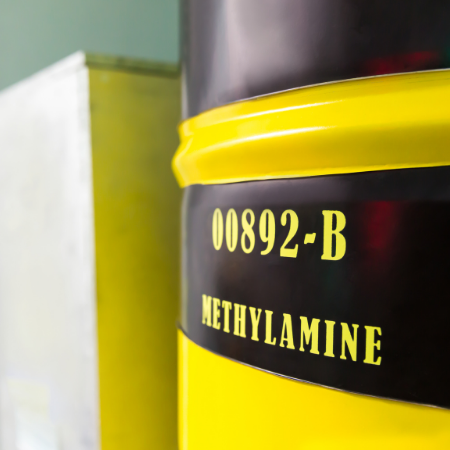The Ultimate Guide to Understanding Pure...
As a chemist, I have always been fascinated by the diverse range of compounds and their applications. One such compound that has caught my attention is pure acetaldehyde. In this ultimate guide, I will take you through everything you need to know about pure acetaldehyde – its properties, uses, and benefits.
What is Pure Acetaldehyde?
Pure acetaldehyde, also known as ethanal, is a colourless liquid with a pungent, fruity odor. It is an organic compound that belongs to the aldehyde group. The molecular formula of pure acetaldehyde is CH3CHO. It is highly volatile and flammable, making it a challenging substance to handle. Pure acetaldehyde is commonly found in nature, produced as a byproduct of fermentation processes in various fruits and other organic materials.
Properties of Pure Acetaldehyde
Pure acetaldehyde possesses several unique properties that make it a versatile compound. It has a boiling point of -21°C and a melting point of -123°C. The density of pure acetaldehyde is approximately 0.78 g/mL. It is miscible with water, ethanol, and most organic solvents. This property makes it an important component in various industrial processes.
The vapour pressure of pure acetaldehyde is relatively high, which contributes to its strong and distinctive odor. It is soluble in water to a limited extent, and its solubility increases with temperature. Additionally, pure acetaldehyde has a low flash point, making it highly flammable and requiring careful handling.
Uses of Pure Acetaldehyde
Pure acetaldehyde finds application in several industries due to its unique properties. One of its primary uses is as a precursor for the synthesis of various chemicals, such as acetic acid, butanol, and acetic anhydride. These chemicals have a wide range of applications, including the production of plastics, pharmaceuticals, and solvents.
In the perfume and fragrance industry, pure acetaldehyde is used to create fruity and green notes in perfumes and colognes. Its strong and distinctive odor adds a unique character to the final products. Additionally, pure acetaldehyde is used as a flavoring agent in the food and beverage industry, imparting a fruity taste to various products.
Benefits of Using Pure Acetaldehyde
The use of pure acetaldehyde offers several benefits in different industries. In the pharmaceutical industry, it serves as an essential intermediate in the synthesis of numerous drugs. Its versatile nature allows for the creation of diverse compounds, enabling the development of innovative medications.
Furthermore, pure acetaldehyde plays a vital role in the production of polymers and plastics. It acts as a building block for the formation of polyvinyl acetate, which finds application in adhesives, coatings, and films. The unique properties of pure acetaldehyde contribute to the strength and durability of these materials.
Safety Precautions when Handling Pure Acetaldehyde
Handling pure acetaldehyde requires utmost caution due to its flammable nature and strong odor. When working with this compound, it is crucial to ensure proper ventilation in the workspace to avoid the accumulation of vapors. Personal protective equipment, such as gloves, goggles, and a lab coat, should be worn to minimize contact with the skin and eyes.
Additionally, pure acetaldehyde should be stored in a cool, dry place away from direct sunlight and sources of ignition. It is advisable to use a flammable storage cabinet specifically designed for hazardous materials. In case of accidental exposure or ingestion, immediate medical attention should be sought.
Where to Buy Pure Acetaldehyde
Pure acetaldehyde can be purchased from various chemical suppliers and distributors. It is important to source it from reputable companies that adhere to strict quality control standards. These suppliers often provide a range of packaging options to suit the needs of different industries.
How to Store Pure Acetaldehyde Properly
Proper storage of pure acetaldehyde is crucial to maintain its stability and prevent any hazardous situations. It should be stored in a tightly sealed container made of compatible materials, such as glass or metal. The container should be kept in a well-ventilated area, away from incompatible substances.
Moreover, it is essential to label the container with the name of the compound, hazard warning symbols, and appropriate safety information. This ensures that anyone handling the container is aware of the potential risks associated with pure acetaldehyde.
Frequently Asked Questions about Pure Acetaldehyde
Q1: Is pure acetaldehyde toxic?
A1: Pure acetaldehyde can be toxic if ingested or inhaled in high concentrations. It is advisable to handle it with caution and follow appropriate safety measures.
Q2: Can pure acetaldehyde be used in the production of renewable energy?
A2: Yes, pure acetaldehyde can be used as a raw material for the production of biofuels and other renewable energy sources.
Q3: Can pure acetaldehyde be used in the cosmetic industry?
A3: Yes, pure acetaldehyde is used in the cosmetic industry for its fragrance-enhancing properties.
Conclusion: The Importance of Understanding Pure Acetaldehyde
In conclusion, pure acetaldehyde is a versatile compound with various properties, uses, and benefits. Its role as a precursor in the synthesis of chemicals and its contribution to the fragrance and flavor industry make it an integral part of numerous applications. However, due to its flammability and toxicity, proper handling and storage are essential to ensure safety. By understanding the properties and applications of pure acetaldehyde, we can harness its potential while minimizing risks.


